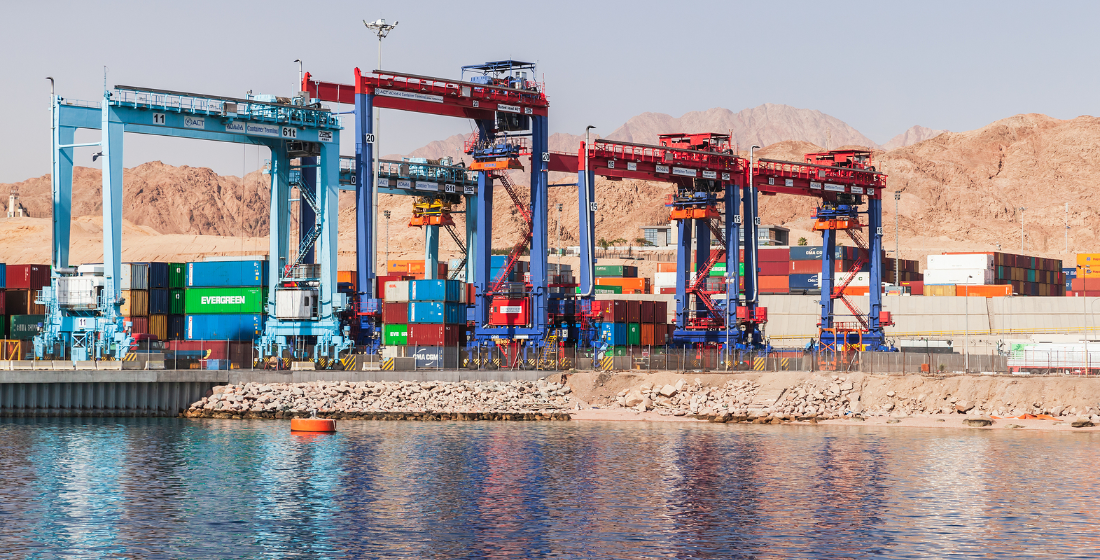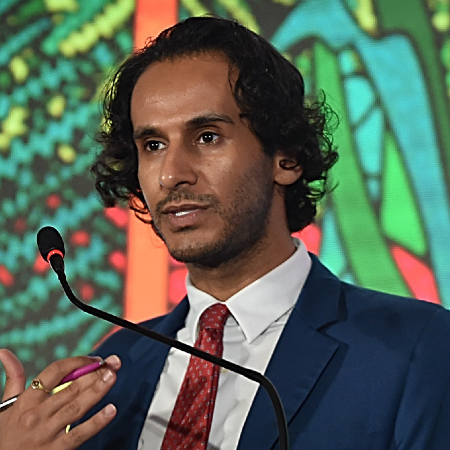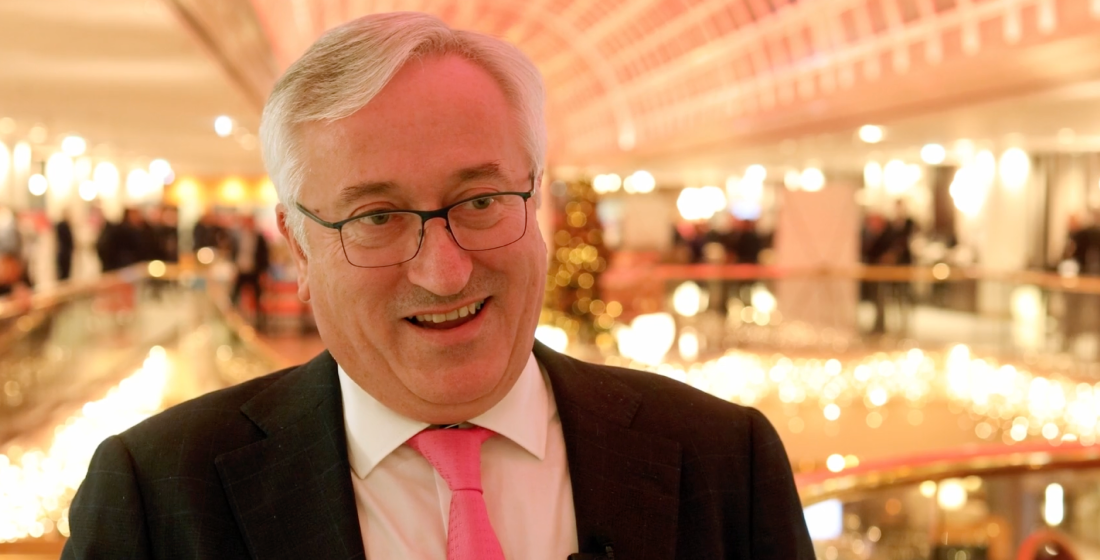TXF MENA: Top 10 takeaways
ECA excellence and large-scale multisourced project finance were the talk of the town at TXF MENA 2019 this month. TXF’s MD Hesham Zakai outlines the most dominant opportunities and headwinds facing the region.

From mapping end-to-end flows for technology and trade to ECAs driving product innovation and flexibility in the Middle East and North Africa (MENA), there was something for all export and project finance practitioners at TXF MENA 2019 in Dubai from 9-10 October.
Deal flow in MENA was healthy in 2018 – accounting for a total volume of $32 billion – across the export finance space. And while the market is not as buoyant in 2019, TXF understands there are some landmarks deals being worked on in the region that could majorly shift the regional picture come December 31.
In 2020, there are also some major ECA-backed project financings in the pipeline for the region. For example, the $1.9 billion Assuit oil refinery expansion in Egypt is taking shape with SACE tipped to back the debt package in a deal that will mirror last year’s MIDOR oil refinery financing in Egypt; sponsors of the integrated $10 billion petrochemical plant to the Duqm oil refinery in Oman will mandate EPC contractors and banks next year; and Salalah Methanol is out to market for around $1 billion in ECA debt to support further expansions to its ammonia plant.
But perhaps the landmark news to be revealed at the event was the Dubai Electricity and Water Authority (DEWA) pulling in record low tariff offers for its latest 900MW solar PV scheme – the fifth phase of the 5GW Mohammed Bin Rashid Al-Maktoum solar park in Dubai. It is clear the cost of generating renewable electricity is coming down in tandem with manufacturing costs. However, savvy financial engineering by project sponsors is still integral to achieving bids as low as of $0.016953 per kWh – the lowest ever bid for a solar PV tariff globally.
But that’s enough of the news for now – without further ado – here are my top 10 takeaways/trends from TXF MENA:
1) The energy space is transforming, but transformation does not always mean a process of ‘out with the old and in with the new.’ Indeed, while most new energy capacity today is solar and wind, all energy forms – including conventional energy – continue to grow. Based on a range of factors from pressure to profitability, different participants are adopting different approaches, meaning the global energy mix of the future is likely to remain diverse.
2) ECAs have been driving a lot of the innovation we see in the market and a clear theme to emerge is the flexibility and inventiveness they’ve shown. This can take form either on a technological level, such as investments in digitisation, or on a technical level, such as the relaxation of eligibility rules.
3) A strong year overall in 2018, in which MENA registered $32bn in deal volume, was always going to be difficult to follow, particularly as a lot of time will have been focused on execution rather than origination in the back end of last year. Moreover, pricing remains tight for banks in particular and uncertainty has limited the growth potential of the market. That being said, there are some landmark deals being worked on, including the ones just mentioned, so please watch this space.
4) Sanctions are a political measure, but too many authorities – especially OFAC – leave these to the private sector to gain the information and act on it. This creates more anxiety in the market and possibly precludes perfectly legal deals from being done. Clearer guidelines and case studies are needed to help alleviate this.
5) Discussion in short term trade finance nowadays focuses on technology rather than interest rates. To be successful in digital trade of the future, you need to map end-to-end flows for technology and trade as all stakeholders have different requirements: the challenge is one of standardisation.
6) There is a way to go before blockchain’s potential has been fully achieved within the world of trade finance, but it is already clear that one of its main attractions is removing the need for unnecessary counterparties.
7) Although at gradual pace, the move towards localisation of markets continues. This is not only through the opening of more rep offices and posts, but we also see a pattern of banks beginning to book deals in local offices.
8) Taking the borrowers’ view: there are three key factors to consider when looking at ECA competitiveness: 1) Pricing, 2) Process, 3) Tenors.
ECAs offer consistent pricing, which is great when other forms of funding are challenging and you know it can be relied upon. However, if – as is the case at present, particularly for larger well-rated companies – there are good financing conditions for borrowers, then that ECA advantage evaporates.
On process, in the MENA region it can be inconsistent. You may be waiting a long time for approval for a deal from a borrower or a government, and then it finally arrives – along with a demand for everything to be done and dusted in no time at all. That can be easier for smaller or local players to achieve, rather than ECAs which have to adhere by more processes.
Where ECAs definitely have a competitive edge is in their ability to offer long tenors. On many deals this will be a persuasive enough proposition. On the whole, borrowers will consider all three of the factors to determine whether – on balance – ECA financing is something they would like to pursue.
9) We looked at the North African part of MENA and Egypt stood out for a few reasons. It is moving beyond the end of its IMF programme, which has helped to stabilise its economy, and we could now see government gross debt dropping significantly over the next two years. Even concerns about inflation – which if it happened could lead social unrest – are being held at bay for now, with inflation rates performing better than target at present.
10) The export finance market is bad at making predictions. However, we can use that to our advantage, because from now on we just have to predict that the market will be bad, there will be no innovations, and everyone will get a terrible bonus. Then, inshaAllah, that will also be proven wrong and we’ll all be really happy.
With Expo 2020 in Dubai next year, we’re very excited about the plans that we have and we hope you will remain with us on the journey. Please do not hesitate to email me at hesham.zakai@txfmedia.com if you have any ideas you would like to discuss at TXF MENA 2020.
Now time to get up to speed on the markets.
Here's our exclusive TXF Essentials subscriber content
After GNA 1: Will banks turn up the Brazilian LNG-to-power funding tap?
Following the recent financial close on GNA 1, and the Sergipe project the previous year, is the Brazilian LNG-to-power sector ready for commercially banked deals with little or no DFI and ECA support? Some DFIs beleive so, but GNA 2 will be the real test.
Corporate perspectives: Roche on the satisfactions of early gpi adoption
Martin Schlageter, head of treasury operations at Roche, the pharmaceutical company based in Switzerland, gives TXF his candid take on SWIFT gpi developments and the corporate experience of financing trade in challenging times.
ICC: Working together in trade to tackle compliance
Olivier Paul, director of finance for development at the International Chamber of Commerce (ICC) explains the need to comply with mounting regulation and compliance requirements has led to unintended consequences for trade finance.
FEX meets Euler Hermes legal
Last month in the third event in the series of 'FEX meets', the German chapter of the Future of Export Finance (FEX) sat down with Euler Hermes' legal and compliance team to discuss innovations in the German ECA's cover policy and product developments.
Plus, to top things off...
the news you thought you had but didn't.
Channel Capital adds to trade finance investment team
Pouya Jafari, previously a credit analyst at Wells Fargo, has joined UK-based asset manager Channel Capital Advisors as a trade finance-focused associate.
Hassyan IWP RFP out to prequalified bidders
Dubai Electricity and Water Authority (DEWA) has launched the request for proposals (RFP) to prequalified bidders for the 120 million imperial gallons per day sea water reverse osmosis Hassyan IWP project. Ernst & Young, WSP and CMS are advising DEWA on the tender.
Duqm petchem project FA due by year-end
Duqm Refinery and Petrochemical Industries Company (DRPIC) – a state-owned joint venture between Oman Oil Company and Kuwait Petroleum International – is expected to appoint a financial adviser over the next three months for its $10 billion petrochemical complex in Oman.
Ashghal launches sewage treatment RFP
The Public Works Authority of Qatar (Ashghal) has launched the request for proposals (RFP) for the Al Wakra and Al Wukair sewage treatment project with a deadline for responses of 7 January 2020.
Engie bids lowest for Fujairah F3 IPP
Emirates Water and Electricity Company (EWEC) – a subsidiary of state-owned Abu Dhabi Power Corporation (ADPC) – has received six bids for its 2.4 GW Fujairah F3 CCGT independent power project.
Poland renewables auctions set for December
Polish energy regulator URE has set the dates for its next round of greenfield renewables CfD-backed capacity auctions. Auctions for 2.5GW of onshore wind and 750MW of solar are scheduled for 5 December and 10 December respectively.
Taweelah IWP reaches financial close
Following the signing of loan documentation last month, ACWA Power has reached full financial close on the debt backing the $900 million Taweelah 200 MIGD reverse osmosis IWP in Abu Dhabi.
Seplat raises bridging debt for Eland acquisition
Nigerian independent oil and gas group Seplat Petroleum Development is to finance part of its £382 million ($491.3 million) cash offer for Eland Oil & Gas via a bridge loan from sole financial adviser and lead arranger Citigroup.
Lightsource BP nears close on Impact Solar 1 project
Lightsource BP is in advance financing talks with HSBC and CohnReznick Capital to back the 198.55MW Impact Solar I project in Texas. Financial close is targeted for year-end.
Patriot Rail & Ports prices term loan B
US freight railroad operator Patriot Rail & Ports – currently the subject of acquisition by First State Investments (FSI) from SteelRiver Infrastructure Partners – has priced a $285 million seven-year term loan B, led by RBC and Barclays.





